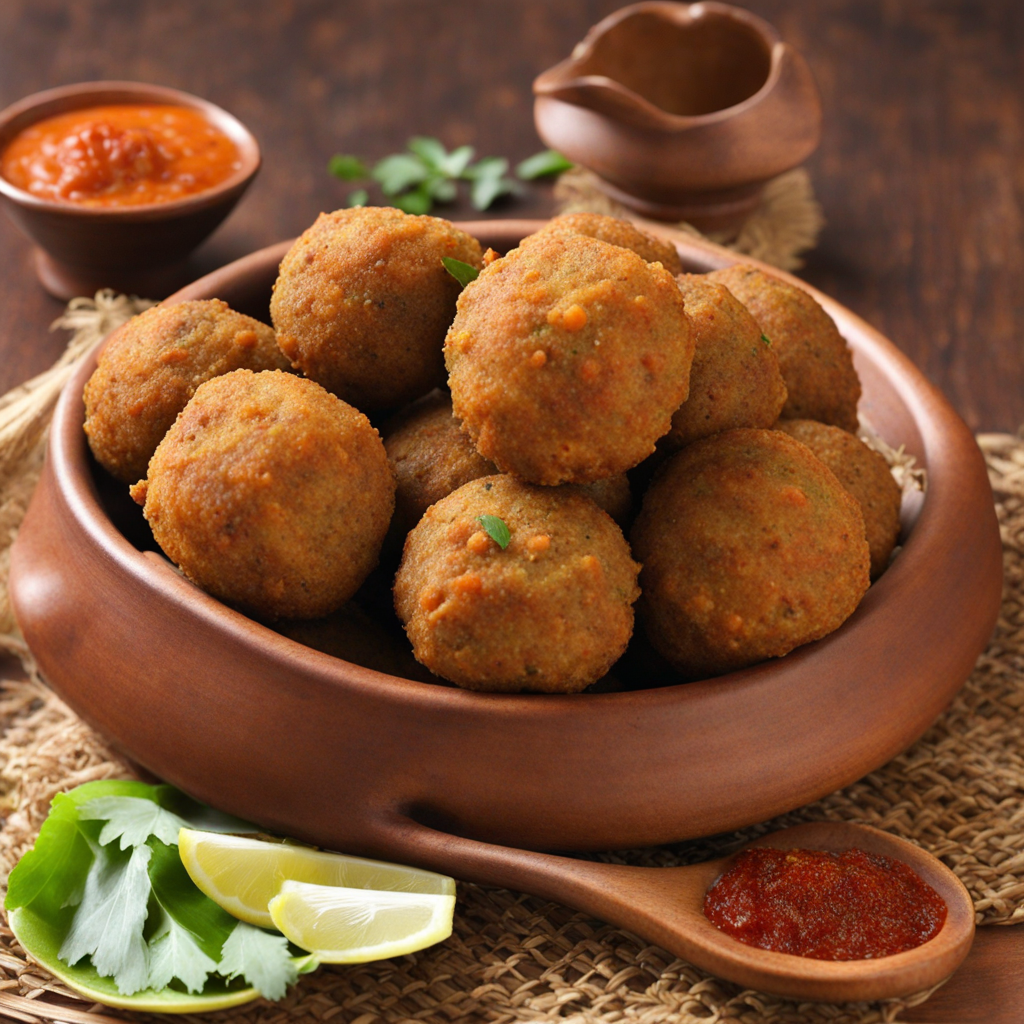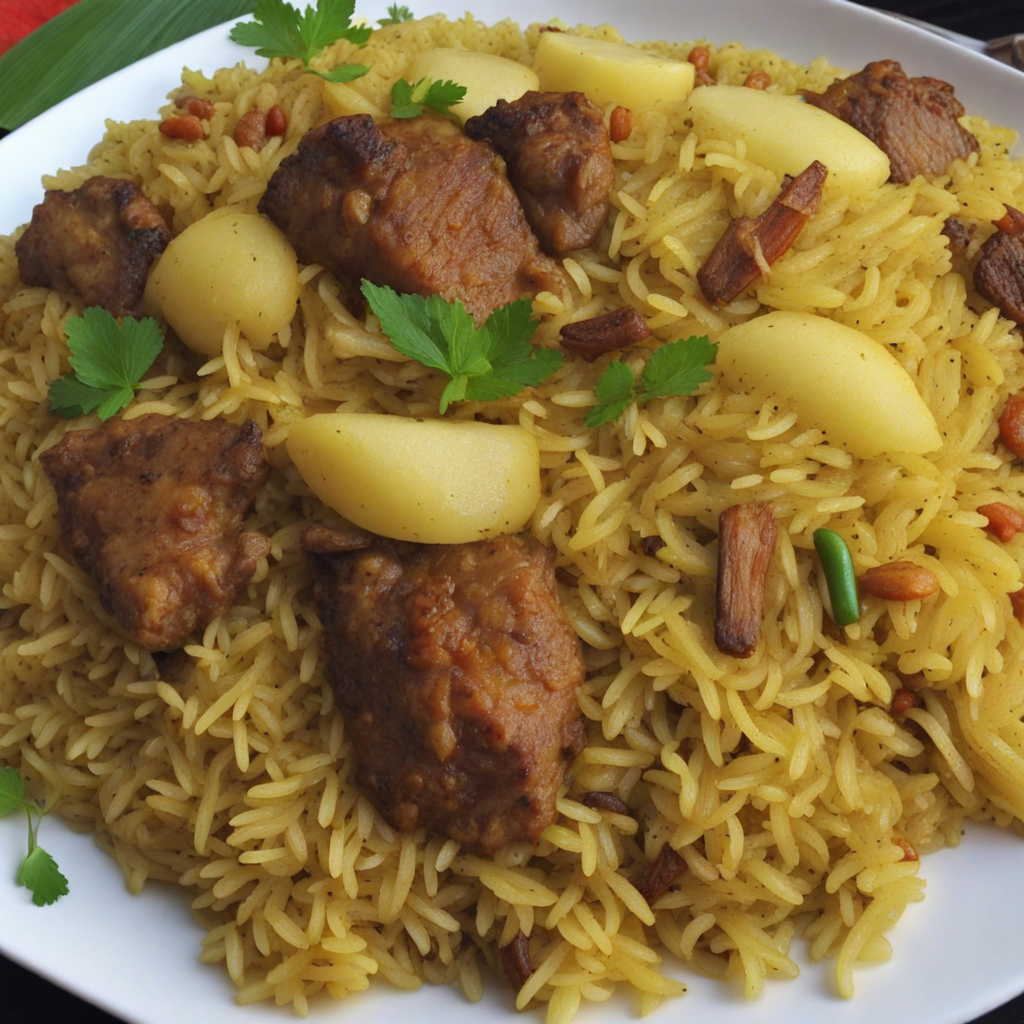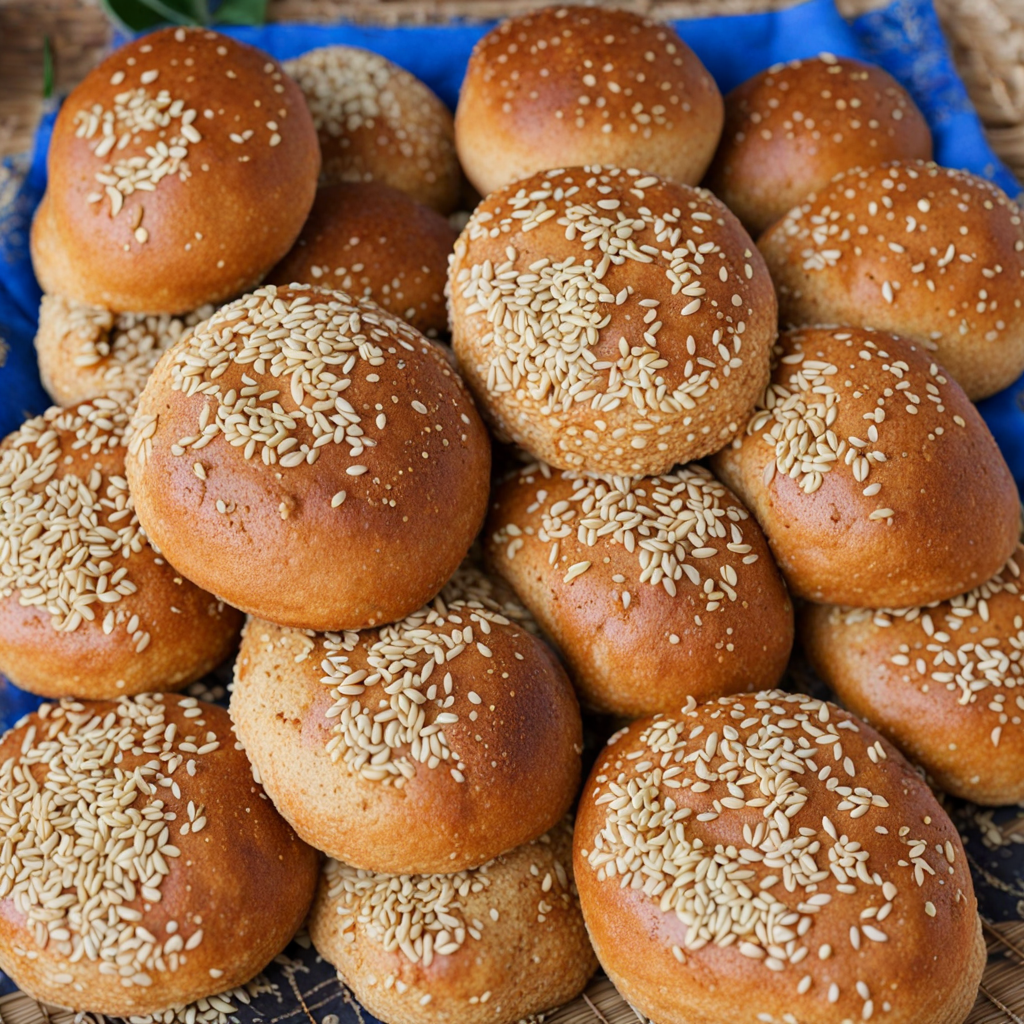Maandazi
Maandazi is a delightful Tanzanian treat that combines the comforting essence of fried dough with a hint of exotic spices. These delicious pastries are typically made from a simple mixture of flour, sugar, yeast, and coconut milk, giving them a rich and slightly sweet flavor. The dough is kneaded until smooth, then allowed to rise, allowing for a soft and fluffy texture once cooked. The addition of cardamom or nutmeg provides a subtle warmth that elevates the taste, making each bite a journey through fragrant spices and comforting sweetness. Once shaped into triangles or rounds, the maandazi are deep-fried until golden brown, creating a crispy exterior that contrasts beautifully with the soft, airy interior. They are often enjoyed as a breakfast item or a snack, perfect for pairing with tea or coffee. The aroma that fills the kitchen as they fry is irresistible, drawing people in to savor their warm, inviting essence. The crispy edges give way to a tender center, and the combination of flavors creates a satisfying experience that leaves you wanting more. While maandazi can be enjoyed plain, many people like to enhance them further with fillings or toppings. Some variations include adding raisins or coconut flakes into the dough, while others may serve them dusted with powdered sugar or drizzled with honey. Each region may have its own twist, making maandazi a versatile treat that showcases the rich culinary heritage of Tanzania. Whether enjoyed on their own or as part of a larger spread, maandazi is a delicious way to explore the unique flavors of East African cuisine.
How It Became This Dish
The Engaging History of Maandazi: A Tanzanian Culinary Delight #### Origins Maandazi is a beloved fried doughnut originating from East Africa, particularly popular in Tanzania and Kenya. Its roots can be traced back to the Swahili coast, where a blend of cultures and culinary traditions shaped the region's gastronomy. The word "maandazi" is derived from the Swahili term for "doughnuts," encapsulating its essence as a sweet, fried snack. The Swahili coast was a melting pot of cultures, influenced by Arab, Indian, and African traditions due to trade routes that connected these diverse peoples. The introduction of spices like cardamom, cinnamon, and nutmeg from Indian traders added a fragrant allure to the basic dough recipe, giving rise to the unique flavor profile that distinguishes maandazi from similar fried pastries found across the globe. The evolution of maandazi mirrors the historical trade dynamics of the region. Initially, it was a simple bread-like item consumed by East African coastal communities, but as trade flourished, so did culinary influences. The incorporation of coconut milk, sugar, and spices transformed maandazi into a more refined treat, loved by many and emblematic of the Swahili culture. #### Cultural Significance Maandazi holds a special place in Tanzanian culture. It is not merely a snack but an integral part of various social and cultural gatherings. Traditionally, maandazi is served during celebrations, weddings, and religious occasions, often enjoyed alongside chai (tea) as a popular breakfast item or afternoon snack. The preparation of maandazi is often a communal activity, where families gather to mix dough, roll it out, and fry it together. This aspect of preparation fosters a sense of community and continuity of culinary traditions, especially among women who pass down recipes and techniques through generations. The sharing of maandazi is a gesture of hospitality, symbolizing warmth and generosity inherent in Tanzanian culture. In urban areas, maandazi has also become a popular street food, sold by vendors in bustling markets and on busy street corners. The enticing aroma of frying dough and the sight of golden-brown maandazi attract locals and tourists alike, making it a quintessential part of the Tanzanian culinary landscape. #### Development Over Time Over the years, maandazi has undergone various transformations, adapting to changing tastes and dietary preferences. While the traditional version remains popular, modern interpretations have emerged. Some cooks experiment with fillings, introducing sweet variants filled with chocolate, fruits, or custard, while others create savory versions incorporating ingredients like cheese or vegetables. The global rise of interest in African cuisine has further propelled maandazi into the spotlight. Outside Tanzania, it has found its way into the culinary scenes of the diaspora, where it is celebrated in African restaurants and at cultural festivals. This globalization of maandazi has led to an increased appreciation for its unique flavor and cultural significance. In recent years, health-conscious trends have also influenced the preparation of maandazi. Some cooks have started to explore healthier alternatives, using whole-grain flours or reducing sugar content. The desire to cater to modern dietary preferences reflects a broader trend in culinary practices, where traditional dishes evolve to accommodate contemporary tastes without losing their cultural essence. #### Conclusion Maandazi is not just a food item; it is a rich tapestry woven into the cultural fabric of Tanzania. Its origins rooted in the historical trade dynamics of the Swahili coast, its significance in social and cultural gatherings, and its evolution alongside changing culinary trends highlight its importance in the Tanzanian identity. As we delve into the history of maandazi, we uncover the stories of the people who have shaped this delightful treat. It serves as a reminder of the resilience and adaptability of culinary traditions, bridging generations and communities through the simple act of sharing food. Whether enjoyed at a bustling street corner or served at a family gathering, maandazi continues to be a symbol of Tanzanian hospitality, culture, and creativity, captivating the hearts and palates of all who partake in its joy.
You may like
Discover local flavors from Tanzania







